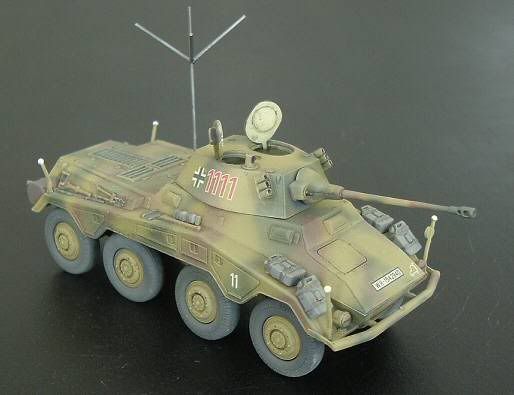Hey Chad,
There are lots of answers to this question. German camo is pretty easy because really nothing is wrong. Early war is very easy because everything was gray
![Big Smile [:D]](/FSM/CS/emoticons/icon_smile_big.gif)
For later war WWII patterns, the colors are important. Dunkelgelb, Rotbrown, and Green??. The schemes are mostly random (except when they are ordered by the commander to adhere to some kind of division pattern) and are
usually some form of the ambush scheme and can be with or w/out the "leaves". It's really easiest to go by a picture and try to keep it close to that.
For painting itself, here is my order. Primer, preshading, dunkelgelb base coat, draw the pattern lightly with a pencil, then the red and green, then blend with extra thinned dunkelgelb again to clean up overspray.
Alot of people just spray away without drawing the pattern and get excellent results.
Here is my finished Puma with the technique I just described. I didn't use a reference picture. It's just random.
